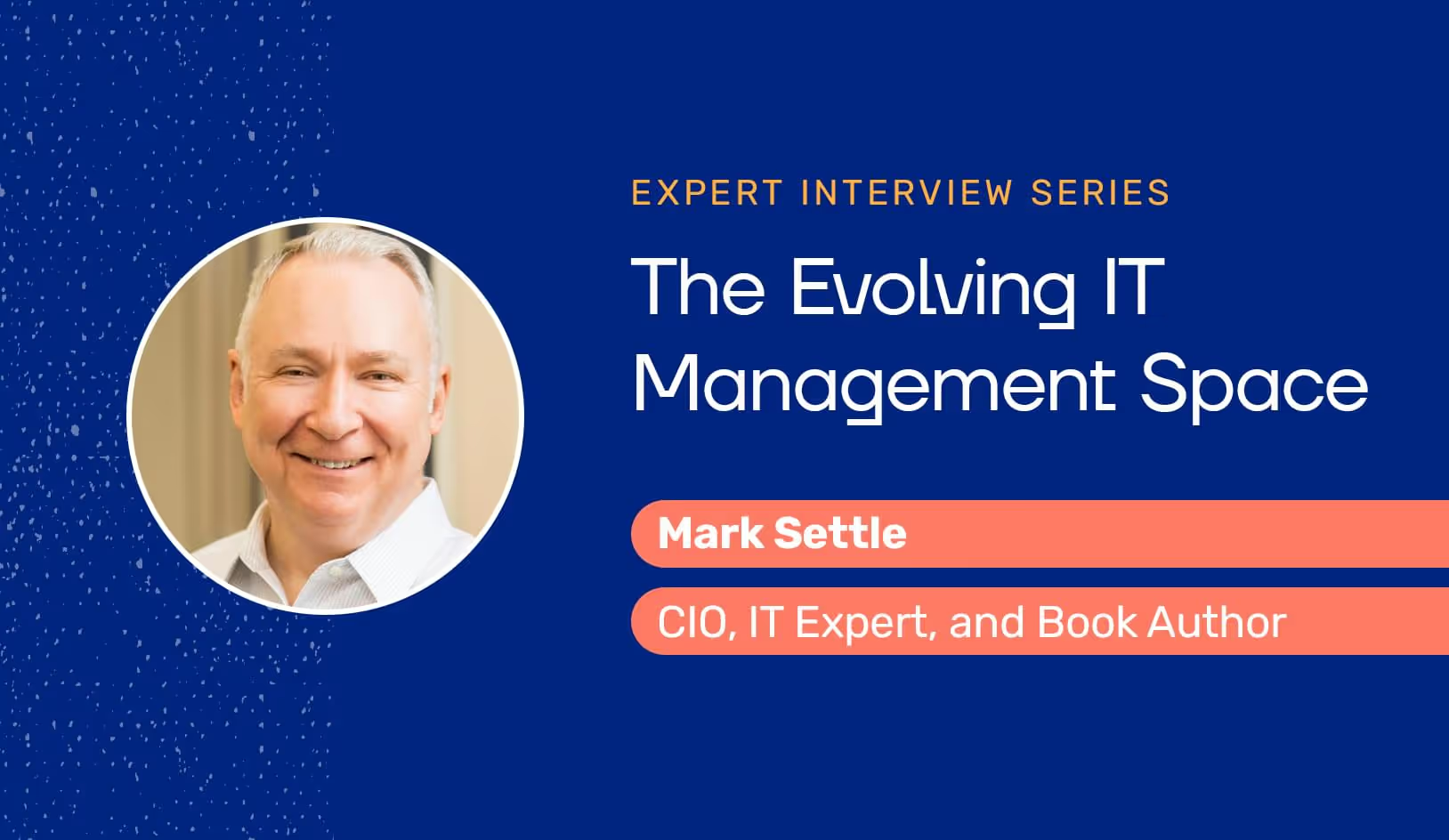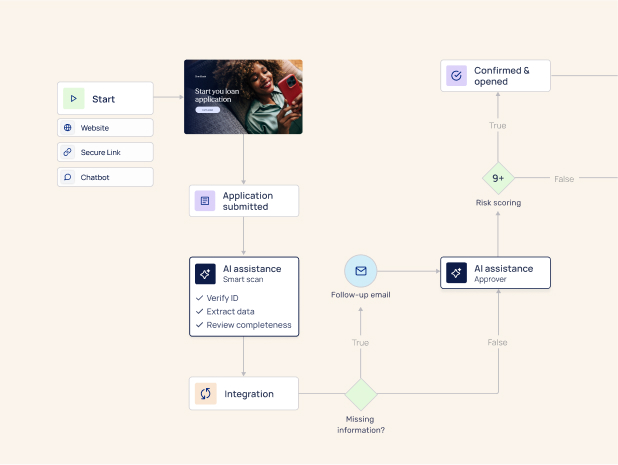Mark Settle is a seven time CIO with broad business experience in information services, enterprise software, consumer products, high tech distribution, financial services and oil & gas. He has led IT organizations that support the internal business operations, product development activities and customer-facing service capabilities of multiple Fortune 500 companies. Settle is the author of Truth from the Trenches: A Practical Guide to the Art of IT Management and a three time CIO 100 honoree. His latest book – Truth from the Valley – describes IT practices in Silicon Valley firms.
We had the opportunity to interview Mark Settle, a former CIO and book author to gain insights on the current IT management space. Settle shares some intriguing thoughts and suggestions for IT.
Q&A with Mark Settle
Q: Where should businesses start with digital transformation?
There are very few – if any – businesses that aren’t employing information technology in some way to streamline internal operations and serve their customers. So it’s really less a question of where to start than what to do next. There’s no prescriptive answer to that question since every business has a unique starting point in terms of its technical capabilities and a unique set of challenges and opportunities.
The classic targets for digital transformation are operational resiliency, efficiency and security. Resiliency can be improved in many cases by expanded use of cloud services and resources. Efficiency can be improved through business process automation and expanded use of cross-functional collaboration tools. Security safeguards need to be customized for the unique challenges associated with a company’s business model and areas of operation.
Finally, businesses should continually seek ways of transforming the relationships they have with their customers in ways that make routine interactions more personalized, engaging and persistent. The use of digital techniques to reduce customer friction and improve customer retention are always fruitful areas of investment.
Q: Where should business leaders concentrate their efforts when it comes to digital transformation in order to not just survive, but thrive in the current environment?
This is an area where strategic prioritization is essential. It’s far too easy to get caught up in endless proof-of-concept experiments and prototyping projects without making the financial and organizational commitments that are needed to turn new technical capabilities into a source of competitive advantage.
When business executives ask me about where to concentrate their efforts, I ask them ‘what needs to be fixed’ in the way business is conducted today. Digital solutions that address strategic operational weaknesses should be given top priority. My second question is ‘have you experimented with any new technologies that show promise for your business’. If the answer is yes, then I suggest they double down on investments in one or more of those technologies and drive broad-based adoption in the shortest possible period of time. If you’ve proven to yourself that your firm would benefit from the expanded use of public cloud services or robotic process automation or machine learning analytics, then expand efforts in one or more of those areas as broadly and deeply and quickly as you can afford.
The third option is to launch an assessment of a wholly new digital technology that may have strategic value. Although that approach may also deliver benefits, the lead time to achieving strategic ROI will likely be likely far longer than correcting known weaknesses or leveraging technologies that have already produced preliminary benefits.
Q: In your opinion, what will be the long-lasting effects on the IT management space when things get back to normal and how should individuals prepare for what’s to come?
That’s really the million-dollar question. Despite all the speculation, nobody knows what ‘back to normal’ is really going to look like. Will the human interactions involved in traditional office work eventually draw most of the workforce back into fixed working locations or will knowledge workers choose to work remotely some or most of the time in the future?
The long-lasting effects on IT management really involve people management issues more than technology management issues. If you wanted to be provocative you could argue that the expansion of cloud-based applications and resources over the past 15+ years was the perfect preparation for Covid. The technology capabilities that people need to perform their jobs today can largely be provided via the Internet. But how do you go about instilling company values, cultivating corporate culture, fostering teamwork, and becoming emotionally invested in the career development of your employees if your relationships are solely based on Zoom calls and Slack messages? We’re either entering an idyllic world in which individuals have far greater control over determining the ways they choose to manage their time and perform their jobs or we’ve opened a Pandora’s Box that many may live to regret. My personal crystal ball is far too cloudy to make a prediction one way or the other.
Q: How are you and your organization responding to the evolving IT management sector?
The command and control days in which centralized IT groups bought managed and administered all the IT services employed within a commercial enterprise are over. The good news is that IT professionals won the argument about the importance of ingraining IT capabilities into every aspect of business operations. The bad news is that business departments can now go off and buy many or most of the services they need to perform their jobs with little or no IT involvement or oversight.
In the modern work world, IT leaders need to step back and function as stewards of their firms’ overall investment in information technology, even if they don’t own and control every IT service that’s currently in use. IT groups retain responsibility for overall information security, master data management and cross-functional application integration. They also can monitor the utilization of different services and provide functional executives with valuable insight into the ways in which their teams are using different types of IT tools.
Stewardship is different from ownership and it will manifest itself in different ways in different companies. However, leaders who choose to turn a blind eye to the ways in which technology is being employed by business departments are shirking their corporate responsibilities and potentially jeopardizing their personal job security.
Q: How are innovative, digital products shaping the industry and changing the way companies need to work?
This is always an interesting question because I frequently wonder if technology is changing the way people work or if the way people choose to work is changing technology. For example, the smartphone was never invented as a means of improving employee productivity or workforce efficiency but once it came into being it was leveraged by commercial enterprises to do just that! Texting was initially embraced as means of enabling real-time social interaction with friends and family. It was not invented as a replacement for email but it’s widely used today for internal business communication.
Digital technologies will evolve on a continuous basis in ways that are frankly difficult to predict. But if new technologies are to have any business value they must do at least one of three things. They need to automate manual processes; democratize data in ways that improve efficiency, customer experience and decision-making; or reduce end-user friction, whether the end users are company employees or paying customers. Some technologies do one of these things exceptionally well but the ones that have the greatest business impact do all three.
“Digital solutions that address strategic operational weaknesses should be given top priority.”
To learn more about Mark Settle, you can reach out on Linkedin.
Click here to learn more about EasySend’s no-code platform for digitizing customer journeys in insurance, banking, financial services, and more.
Think you’re a good fit to participate in this expert series? Reach out to Dore Dadon at d.dadon@easysend.io for more information.





